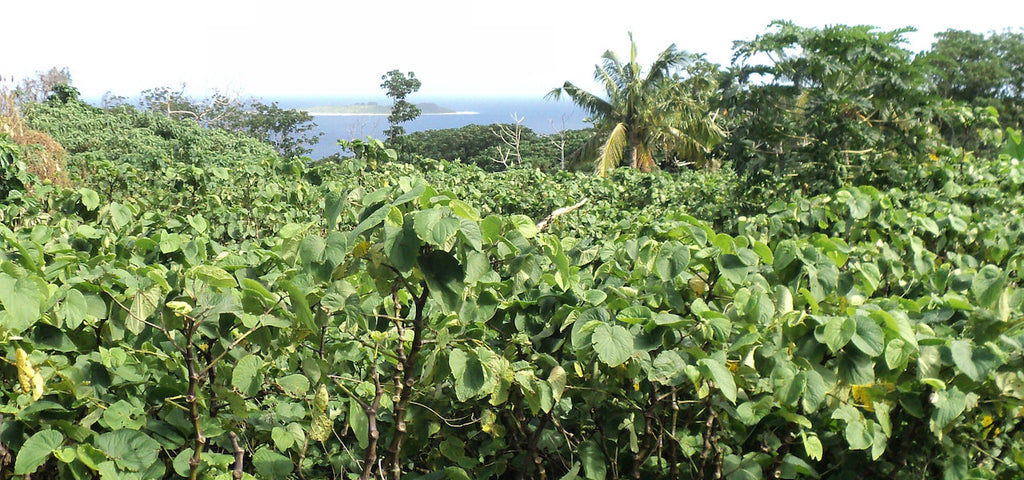What is Kava?
Kava (Piper Methysticum) is a shrub plant that has been farmed throughout the South Pacific Islands for thousands of years. It thrives on the rich volcanic soils of Hawaii, Fiji, Vanuatu, and Tonga. After 3-4 years of growth the crown and lateral roots of the Kava plant are harvested, dried, and pounded into a root powder which is then used to make a traditional Kava beverage.
Why drink Kava?
Kava has been consumed for cultural, social, medicinal, and religious purposes across the Pacific for thousands of years. Kava helps promote a relaxed state of body and mind. It has soothing properties that may promote an ease of stress while providing a better sense of happiness and wellbeing. The active compounds of Kava that together provide these relaxing effects are called Kavalactones. There are six Kavalactones that are primarily attributed to the effects of drinking Kava. The Kavalactones are: Demethoxyyangonin, Dihydrokavain, Yangonin, Kavain, Dihydromethysticin, and Methysticin.

Kava is traditionally served out of a Kumete/Tanoa (Wooden Kava Bowl) and consumed out of a polished coconut shell.

